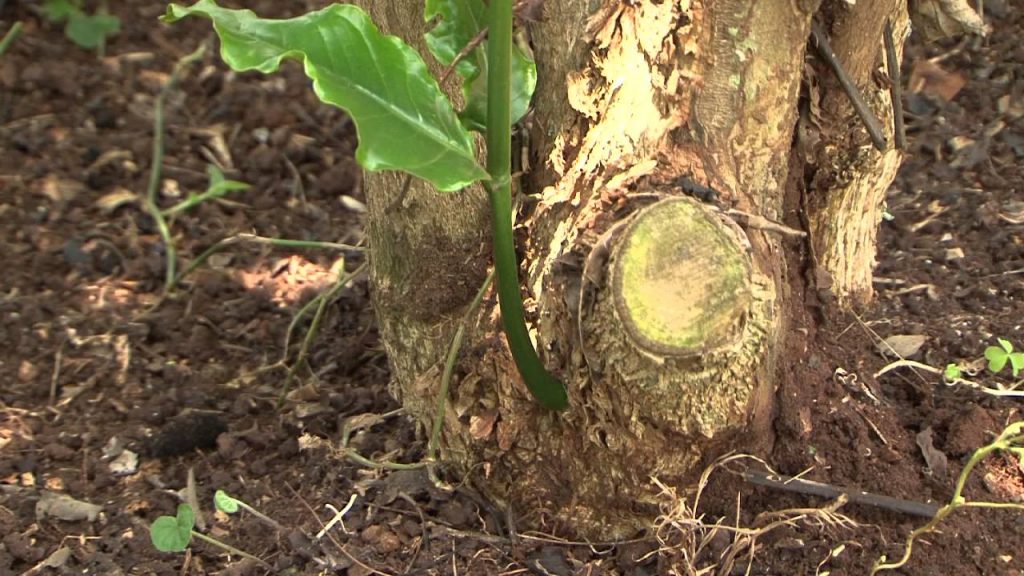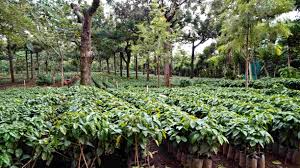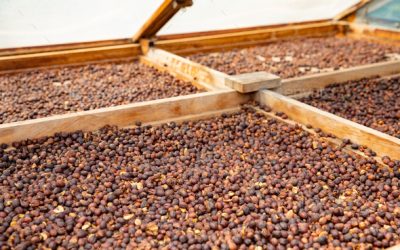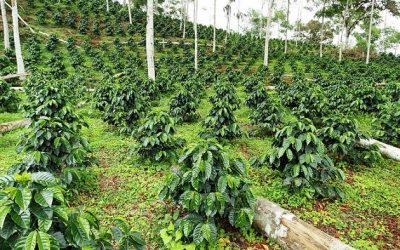Stumping old coffee trees for more yields.

Stumping is more aggressive than pruning. It means removing a large part of the trunk and its stems, although some can be left to stimulate growth. When stumping coffee trees, you must be careful to provide enough nutrients for the tree to recover.
Stumping is usually performed when trees are old, infested, when their production or growth has declined drastically, or to make more space.
The low yield of old coffee trees often discourage many farmers to the point of doing away with the garden. However, one should never give up but keep seeking advice on how to overcome the challenge.
Before jumping in to any stumping, consider the following factors:
Your farm: plant variety, production age, plantation density and farm organization, shade system, fertilization practices.
Your region: incidence of pests and diseases, required phytosanitary treatments, and environmental conditions.
Your goals for quality, yield, and the degree of growth manipulation of your plant.
And don’t forget to consider economic and human resources and calculate your production costs. More intensive strategies mean more time and money spent on crop management practices, fertilization, labor, disinfection, monitoring, and equipment.
How to stump your trees.
Whenever you cut a coffee tree, you are creating wounds and increasing the risk of infection. Stumping should be done after the harvest and cold seasons, so you don’t allow [the tree] to sprout and produce what you won’t collect and so that you don’t stimulate the growth of sprouts that will be victims of fungi and diseases.
The best way to stump is making one clean, even cut, at an oblique angle.
The cut mustn’t create a cavity in the wound. This would make a place for water to accumulate and increase the risk of infection. “The wound must be smooth so water drains off.
If a tree is being stumped because it has disease, make sure to pick all the good cherries and then burn the cut-off branches to prevent any spread of infection. Make sure all tools (secateurs, hoes, pruning saws, knives, machetes, and shears) are very sharp to avoid tearing or uneven cuts, and that they are disinfected regularly.
One can also use contact fungicides as they have a wide spectrum, they are very cheap, and they spare you from incidents.
It’s impossible to recommend a single stumping system because each farm is different and each producer will have different goals and needs. But consider the unique factors of your farm and create a detailed, long-term plan to stimulate yield and maintain healthy plants.
When planned and performed correctly, stumping can help create more and higher quality coffee, which in turn can bring you a more reliable income.


